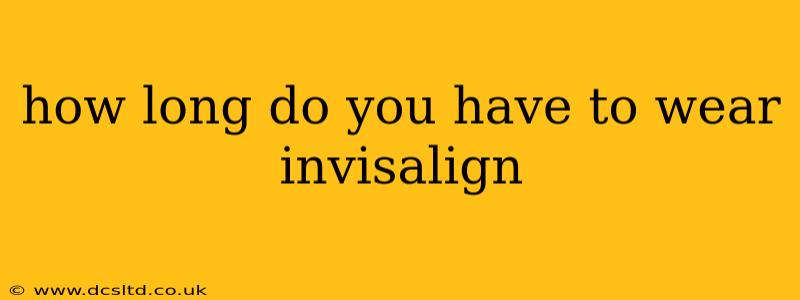The duration of Invisalign treatment varies significantly depending on individual needs and the complexity of the case. There's no one-size-fits-all answer, but understanding the factors involved can help you manage expectations and work effectively with your orthodontist. This guide explores the typical treatment timelines, influencing factors, and what you can expect during your Invisalign journey.
What Determines Invisalign Treatment Length?
Several factors influence how long you'll need to wear Invisalign aligners:
-
Severity of Misalignment: Mild crowding or spacing typically requires less time than severe malocclusion (bad bite). Significant overbites, underbites, or crossbites will necessitate a longer treatment period.
-
Patient Compliance: Consistent wear is crucial. Following your orthodontist's instructions regarding wear time (generally 20-22 hours a day) and aligner changes is essential for successful treatment. Skipping days or wearing aligners for shorter periods will prolong the overall process.
-
Age: Younger patients often respond more quickly to treatment than adults, potentially leading to shorter treatment times. Bone density and growth play a significant role.
-
Individual Biological Factors: Each person's bone structure, rate of tooth movement, and overall oral health can influence the speed of treatment. Some individuals simply respond better to Invisalign than others.
-
Type of Invisalign Treatment: Invisalign offers various treatment options, including Invisalign Lite for minor corrections and Invisalign Full for more complex cases. The complexity of the treatment plan directly impacts the duration.
How Long is Invisalign Treatment Typically?
While it varies, the average Invisalign treatment time ranges from 12 to 18 months. However, some patients may complete treatment in as little as 6 months, while others may require up to 24 months or longer. Your orthodontist will provide a personalized treatment plan and timeline during your initial consultation after a thorough examination and assessment.
What if I Don't Wear My Aligners Enough?
Insufficient aligner wear time can significantly prolong your treatment. You might experience slower tooth movement, leading to a longer overall treatment duration. In some cases, treatment may even fail to produce the desired results if compliance is poor. Your orthodontist will monitor your progress and may need to adjust your treatment plan if you are not adhering to the prescribed wear schedule.
How Often Do I Change My Aligners?
Typically, you'll change your aligners every 1-2 weeks, as directed by your orthodontist. This regular change ensures consistent and gradual tooth movement. Failing to change aligners on schedule will disrupt the treatment progression and potentially lead to discomfort or complications.
What Happens After Invisalign Treatment?
After completing active Invisalign treatment, you'll usually enter a retention phase. This involves wearing retainers to maintain the achieved results and prevent teeth from shifting back to their original positions. The length of the retention phase varies but is generally several months to several years. Your orthodontist will determine the appropriate retainer type and wear schedule.
Is Invisalign Faster Than Traditional Braces?
The speed of Invisalign versus traditional braces is highly individual and case-dependent. While Invisalign can sometimes offer a faster treatment pathway for certain cases, it's not universally faster. The most efficient method depends entirely on the individual's needs and the complexity of the orthodontic issues.
Can I Speed Up My Invisalign Treatment?
While there's no magic bullet to significantly speed up Invisalign treatment, maintaining excellent oral hygiene, diligently following your orthodontist's instructions regarding aligner wear time and changes, and attending all scheduled appointments will contribute to optimal progress.
Remember to consult your orthodontist for personalized advice and a precise timeline tailored to your specific needs. Open communication and adherence to their instructions are key to a successful and timely Invisalign experience.
